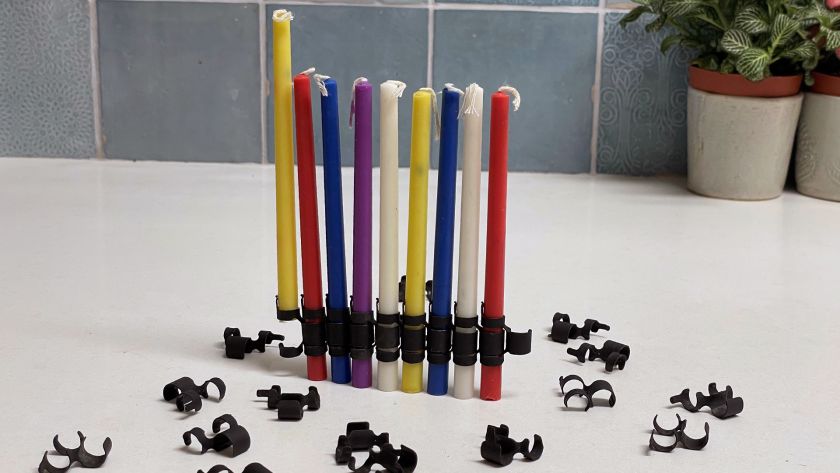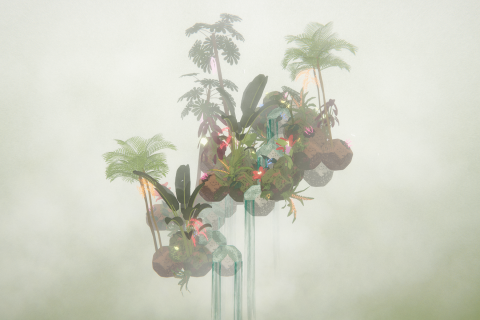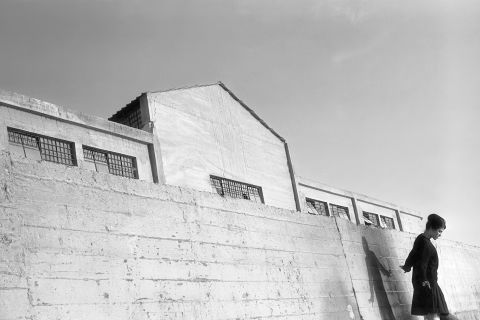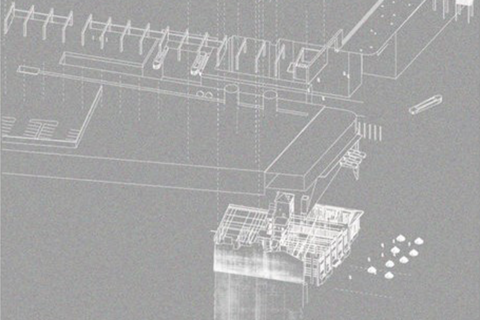Bezalel News
חדשות בצלאל
أخبار بتسلئيل
Hanukkah 2023 | Announcement of the winners of the memorial candle or menorah design award
Bezalel's menorah competition, donated by the Ra'anan and Nicole Agus Foundation, was held for the fifth year. This year, the contestants were asked to refer to the current situation, to the dialogue between darkness and light in a broad sense and in a variety of cultures, to the development and investigation of various aspects of the candle lighting ceremony, to the menorah as a tool for spreading light in the public space and as an expression of the existential and mental state of the users in the current situation.
Among the dozens of contestants, these are the winners:
Menorah design category:
First place:
Sagi Shaf, 2nd year student, Department of Industrial Design
The reasons for the choice: "In a seemingly simple mechanical action, a mesmerizing show is created, full of movement and humor. Using means familiar from distant military worlds made useful for such a symbolic and magical operation, the menorah that we are used to seeing in stilness comes to life. The candle lighting ceremony is actually a machine dance that consumes and ignites at the same time. Endless movement of beginning and end. Hope and despair. The operation of the Sisyphean machine of incessant switching on and off is like something taken from a Kafkaesque story. Thus, it treasures within it both darkness and light.'
Second place:
Ohad Cohen, graduate of the Department of Industrial Desig
The reasons for the choice: "This menorah won the appreciation of the judges thanks to the smart and minimalist use of the ready-made, when the bullets were replaced with Hanukkah candles. Thus, without words, it manages to tell one of the stories of this period. The chained menorah continues a local tradition that combines weapons, craft, and Judaica. The culture of improvisation and the immediate and precise solutions that characterize Israeli culture and the reality in which we live, are embodied in the simple action performed on the links. Replacing the bullets with candles perhaps gives hope for the day after the war, when bullets will not be needed and they will become a non-functional and symbolic ornament only. The identification of the diameter of the bullet, which is very similar to the diameter of a Hanukkah candle, is wonderful.'
Hagar Ofek, graduate of the Department of Industrial Design
Reasons for the choice: "Smart use of vegetable typology and simple manipulation, while maintaining the appearance and recognizable icon of the fennel root. Succeeds in being a beautiful, familiar, and tasty thing, and with an easy change becomes a functional object. In such a deceptive reality the menorah seems for a moment like a work of virtual reality and to be both real and imaginary at the same time. The details of the texture and the surface are treated with sensitivity and add beauty to the treated and precise organicity. The fibrous and tactile surface of the fennel root simulates life lines in an open palm. The observation brings a certain sense of well-being. The menorah preserves the fleeting moment of the fennel root, which has grown to glory and reminds us that nature and growth are stronger than anything.'
Third place and audience favorite award:
Tamar Gerson, second year student, Department of Visual Communication
Reasons for the choice: "Hanukkah is a holiday according to the Jewish consensus. Secular and religious, children and adults alike enjoy observing its traditions. The symbols of the holiday: menorahs, dreidels, sufganiyot, blessings, and holiday hymns are present in almost every Jewish home. Sometimes, this is the only tradition that is preserved. It is no wonder that the menorah is an extensive platform for playful and, at times, humorous design. The Remikub menorah connects to this playful tradition and produces a surprising but elegant connection, which is not overt and yet works. It provides the user with a smiling respite from the harsh reality.'
Winner of the memorial candle design course:
Ada Yoels, graduate of the Department of Ceramics and Glass Design
The reasons for the choice: "The traditional role of paper lanterns is to mark the way in a dark night. It is made of easily obtained and affordable materials - a thin paper bag, sandת and a candle. We see lanterns in ceremonies, events, weddings, parties, temporary path and road markings. Here is a sensitive identification of this moment: of a simple but illuminating bag and commemoration through a memorial candle. A commemoration of a moment, of a fold in a bag, of something ephemeral and its freezing in time. Time stopped. A life that has been stopped.'
The team of judges: Shelly Satat-Kumbor, Nitzan Debi and Shira Keret.











